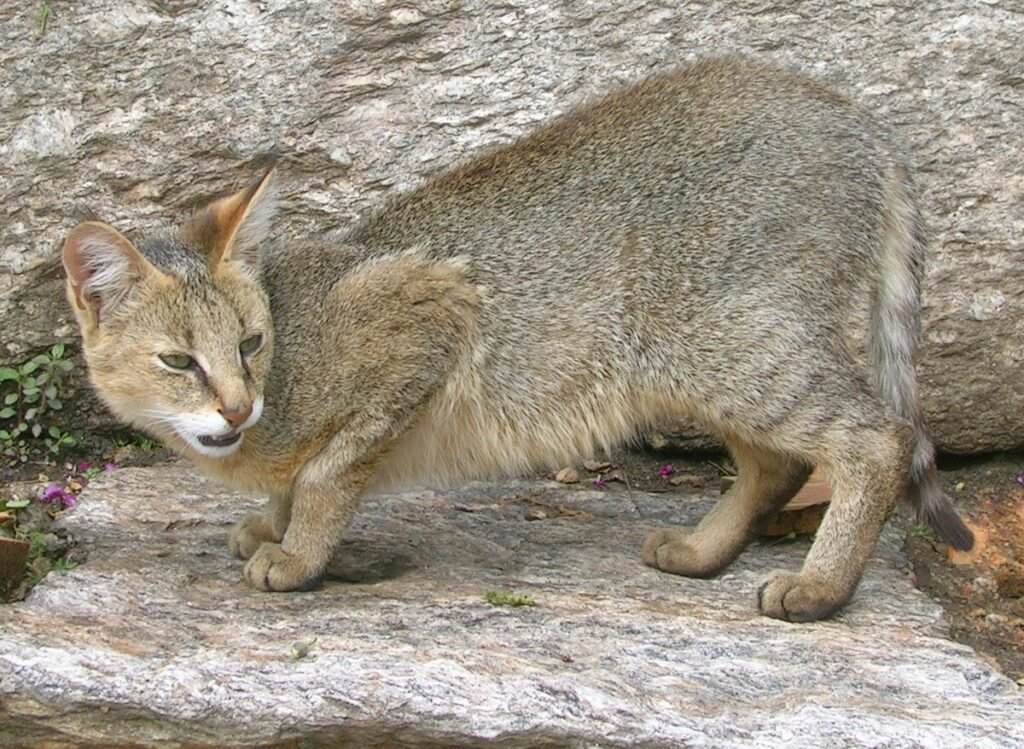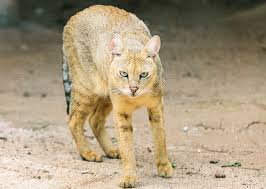
The jungle cat, Felis chaus, is a medium-sized wild cat widely distributed across Asia, from the Middle East to Southeast Asia, and parts of North Africa. Unlike its name suggests, it is not restricted to dense jungles but thrives in a variety of habitats, including grasslands, savannas, agricultural areas, and especially wetlands, reed beds, and riverine forests. It possesses a relatively uniform sandy-brown to reddish-brown or grayish coat, typically unspotted, with faint stripes on its legs and tail. Its long legs, relatively short tail, and distinctively large, pointed ears are characteristic features. Primarily diurnal or crepuscular, the jungle cat is an agile and opportunistic hunter, preying on a wide range of animals including rodents, birds, frogs, snakes, and even sh, showcasing its adaptability and keen hunting skills.

The jungle cat plays an important ecological role as a highly adaptable predator within the diverse ecosystems it inhabits. By controlling populations of rodents and other small vertebrates, they help prevent agricultural damage and contribute to the natural balance of their environments. Their ability to thrive in various habitats, including those modified by human activity, highlights their resilience and their contribution to maintaining biodiversity across a vast geographical range. As a widespread species, their consistent presence is an indicator of healthy small-prey populations and a functioning food web. Therefore, the conservation of the jungle cat is crucial not only for the survival of this robust and resourceful feline but also for the ecological well-being and stability of the many different landscapes it calls home throughout Asia and beyond.
Every day, wild cats around the world face threats like habitat loss, poaching, and natural climate progression. But hope isn’t lost. With your support, we can protect these majestic animals and preserve their habitats.
Join our growing community of wildlife champions and help create a safer future for all 40 wild cat species.
Zoo-EV is a nonprofit organization dedicated to the protection and preservation of the world’s 40 wild cat species through education, community engagement, and conservation initiatives. Zoo-EV is recognized as a 501(c)(3) tax-exempt organization by the IRS, with the Employer Identification Number (EIN) 88-3636567.